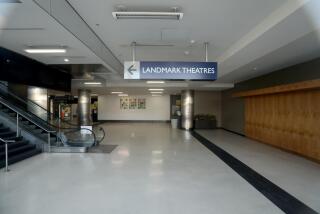Still Struggling on Recovery Road : Progress since quake, but problems remain
- Share via
The Northridge Fashion Center offers a microcosm of recovery in the wake of the earthquake that struck Los Angeles nearly 10 months ago. It presents us with signs of progress, a tally of what remains to be done and the knowledge that we’re far from having come all the way back.
Last Friday one of the mall’s anchor stores, The Broadway, opened for the first time since the quake. “It’s a sign of rebirth,” said Marie McGee of Reseda, who summed up the let’s-move-on feeling of many when she added, “Do you know where the curtains are?” However, just three of the mall’s 210 shops are open; the wait for the rest figures to be at least five months.
To be sure, there is much good news. On Friday, for example, the last broken link in the Southern California freeway chain (an interchange on the Golden State and Antelope Valley freeways) was finally repaired. Twenty of the 22 Los Angeles Public Library branches closed by the quake have reopened. And a Dun & Bradstreet analysis says that the earthquake did not cause any increase in the rate of business failures. But in the face of all this progress, significant problems remain.
HUGE PRICE TAGS: First came the $350-million repair bill for Cal State Northridge, said to be the most ever incurred by a university in a natural disaster. Then UCLA weighed in with a $650-million bill. Now officials of the Los Angeles County-USC Medical Center say they need at least $1 billion.
A new emergency room is badly needed at the Olive View-UCLA Medical Center, but that won’t be built and open until at least 1998 because of the need to determine new tolerance designs for the building’s steel frame. Experts and building officials are yet to come up with new construction standards for steel-frame buildings, which were damaged in the temblor although engineers believed they would withstand a shaking of that magnitude.
MORE GHOST TOWNS: Earlier the number of post-quake “ghost towns”--areas abandoned by owners and tenants--was put at 13. Now three have been added to the list. The 16th, near La Cienega Boulevard and Corning Street, was named just last month. Vagrants, squatters and drug users had taken over.
More than 2,150 buildings remain vacant because of the quake, with more than 12% of them in the ghost towns. As of September, one-fourth of the owners in those areas had no apparent plans to rebuild. Of the remainder, one in five had yet to make a decision on whether to rebuild.
These are some of the reasons a new study of the rebuilding effort to date is badly needed, one that should come with the first anniversary of the quake, if not before. Among other things, it should address the question of how much housing was lost and how much of it figures to be regained by local and federal initiatives. Where do we stand in terms of business losses, and what can be done for those still struggling to reopen? We’d love to say that we’ve put the quake and its aftermath behind us. We can’t just yet.
More to Read
Sign up for Essential California
The most important California stories and recommendations in your inbox every morning.
You may occasionally receive promotional content from the Los Angeles Times.










